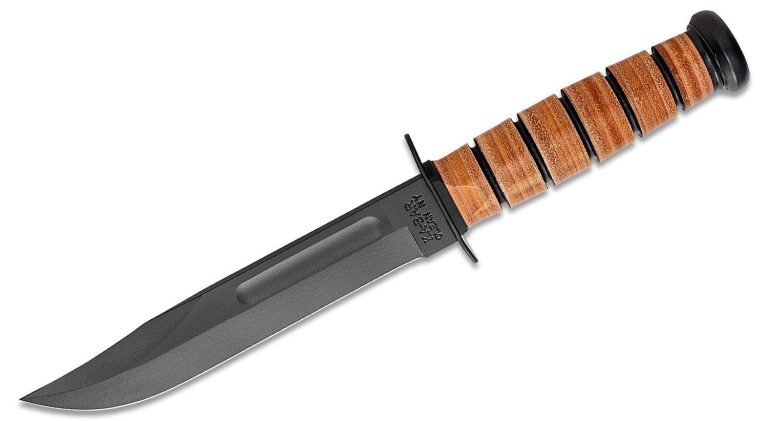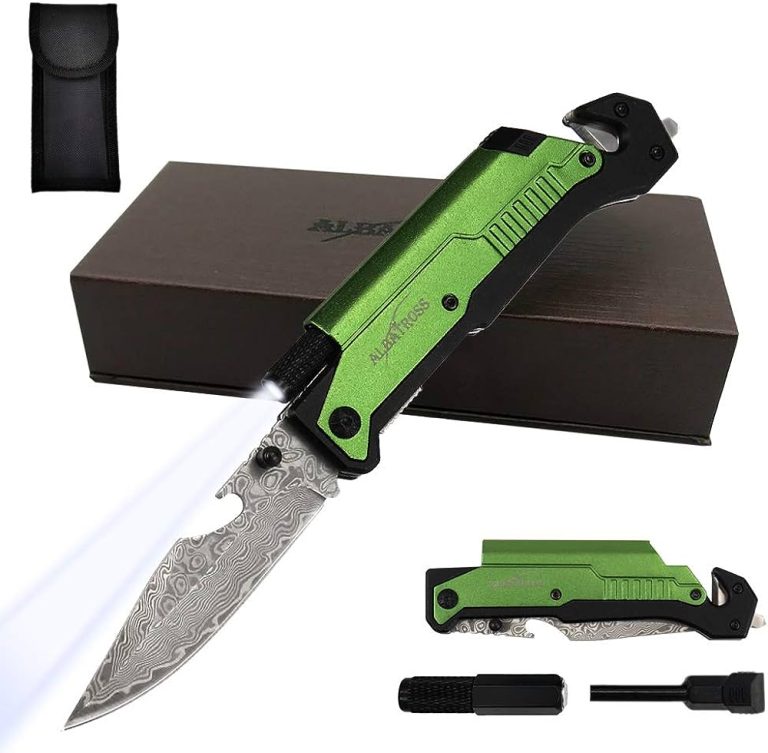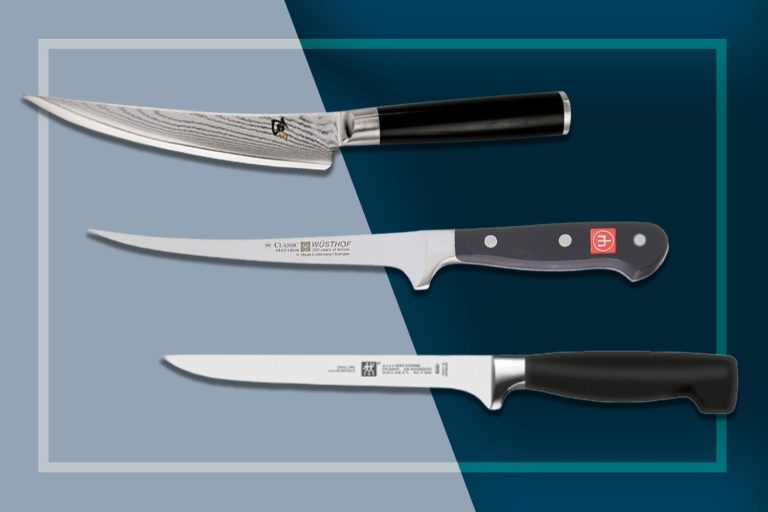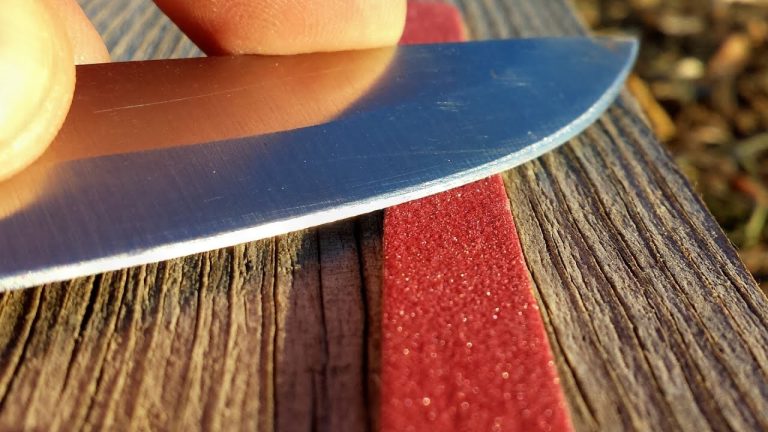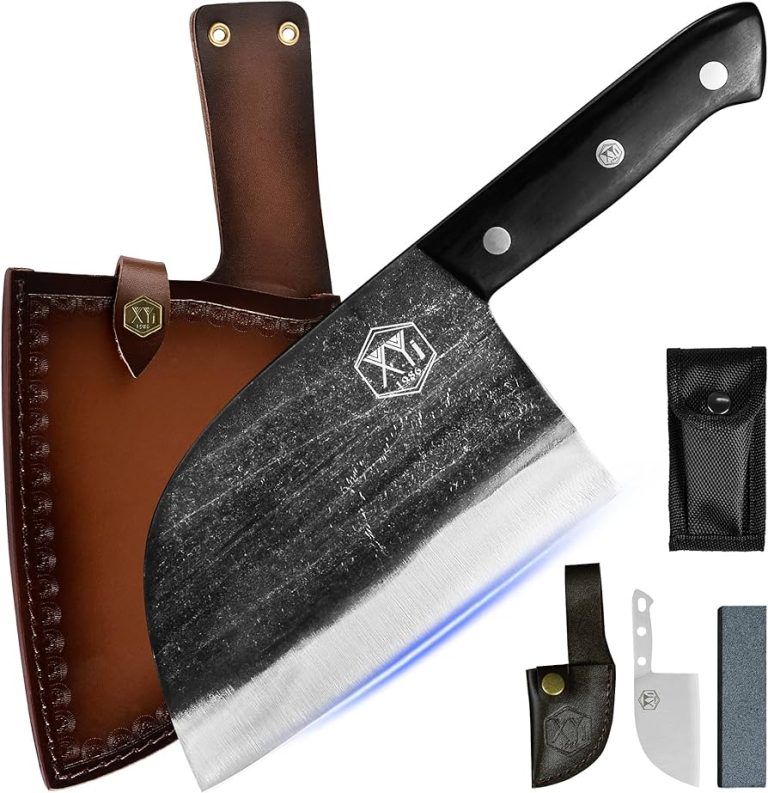Choosing the Right Handle Material for Fishing Knives
Choosing the right handle material for fishing knives is crucial for a comfortable and secure grip, as well as durability and resistance to water and corrosion.+(117 words)Ensuring that you have the right handle material for your fishing knife is essential for a successful fishing trip. With so many options available, it can be overwhelming to determine which handle material is the best fit for your needs.
However, by considering factors such as grip, durability, water resistance, and corrosion resistance, you can make an informed decision. A comfortable and secure grip is crucial for handling the knife efficiently and safely, especially in wet conditions. Additionally, the handle material should be able to withstand exposure to water without deteriorating or becoming slippery.
Furthermore, it should be resistant to corrosion to ensure that it remains in optimal condition even after prolonged use in marine environments. By carefully selecting the appropriate handle material, you can enhance your fishing experience and ensure the longevity of your fishing knife.
Factors To Consider When Choosing A Fishing Knife Handle Material
Choosing the right handle material for fishing knives is crucial. Factors to consider include durability, grip, and water resistance for optimal performance in various fishing conditions.
When it comes to choosing a fishing knife, one important consideration is the handle material. The handle plays a crucial role in ensuring durability, providing a secure grip, ease of maintenance, and overall weight of the knife. In this section, we will explore the key factors to consider when choosing a fishing knife handle material.
Durability
- Stainless steel: Stainless steel handles are known for their durability and resistance to corrosion. They can withstand harsh weather conditions and are highly resistant to rust. Moreover, stainless steel handles provide excellent strength and longevity, making them a popular choice for fishing knives.
- G-10: G-10 handles are made of layers of fiberglass laminated with epoxy resin. This material is highly durable and has excellent stability. It is also resistant to heat, chemicals, and impacts, making it ideal for rugged fishing activities.
- Micarta: Micarta handles are constructed by layering linen, canvas, or paper with epoxy resin. This composite material is lightweight yet incredibly sturdy. Micarta handles offer excellent durability and resistance to moisture, which is particularly beneficial for fishing knives that come into frequent contact with water.
Grip
- Rubber: Rubber handles provide a comfortable and non-slip grip, even when wet. The soft, tactile feel of rubber ensures precise control and minimizes the risk of the knife slipping out of your hand during use. It is an excellent choice for anglers who want a secure grip in any fishing condition.
- Textured handles: Some fishing knife handles come with textured patterns such as ridges or grooves. These textures offer enhanced grip, giving you better control and reducing the likelihood of accidental slips or drops.
- Contoured handles: Handles with contours designed to fit the shape of your hand provide a comfortable and ergonomic grip. These handles reduce strain during extended use and promote better control of the knife.
Maintenance
- Synthetic materials: Handles made of synthetic materials such as rubber and plastic are generally easier to maintain. They are resistant to moisture and do not require special treatment to prevent corrosion or rust. Cleaning a knife with synthetic handle material is as simple as wiping it down with a damp cloth.
- Stainless steel and Micarta: Handles made of stainless steel or Micarta are also relatively easy to maintain. Regular wiping and occasional oiling can help maintain their appearance and prevent any potential damage.
Weight
- Lightweight materials: For those who prioritize agility and ease of handling, lightweight handle materials such as rubber, plastic, or certain synthetic composites are ideal. These handles ensure that the knife doesn’t feel too heavy, allowing you to make quick and precise cuts without fatigue.
- Full-tang construction: Some fishing knives have full-tang construction, where the blade extends throughout the length of the handle. Full-tang knives tend to have a well-balanced weight distribution, ensuring comfortable handling and control.
When choosing the right handle material for your fishing knife, consider factors such as durability, grip, maintenance, and weight. Each handle material offers unique advantages, so it’s important to select one that aligns with your specific needs and preferences. Whether you prioritize durability, a secure grip, ease of maintenance, or a lightweight design, there’s a handle material out there that suits your fishing style.
Common Handle Material Options For Fishing Knives
When selecting a handle material for fishing knives, there are several options to consider. Common choices include wood, rubber, and composite materials, each offering unique benefits for a comfortable and secure grip while out on the water.
When it comes to choosing the right handle material for your fishing knife, it’s important to consider factors such as durability, grip, and aesthetics. Different handle materials offer their own unique benefits and drawbacks, so let’s dive into some of the common options available:
Wood:
- Wood handles are not only visually appealing but also provide a warm and natural feel in your hand.
- Crafted from different types of wood, such as rosewood or birch, these handles offer excellent grip, even when wet.
- It’s important to note that wood handles may require occasional maintenance to prevent moisture damage or splintering.
Rubber:
- Rubber handles are known for their excellent grip, even in wet or slippery conditions, making them an excellent choice for fishing knives.
- The soft and tactile feel of rubber handles ensures a comfortable and secure grip during prolonged use.
- Additionally, rubber handles offer shock absorption, reducing hand fatigue and increasing precision.
Stainless Steel:
- Stainless steel handles are highly durable and resistant to rust and corrosion, making them ideal for fishing knives used in saltwater environments.
- These handles are incredibly sturdy and provide a sleek and modern aesthetic to your knife.
- However, stainless steel handles can sometimes feel cold to the touch and may lack the grip of other materials.
Synthetic:
- Synthetic handles, often made from materials like polymer or nylon, offer a lightweight and ergonomic option for fishing knives.
- These handles are resistant to moisture and are easy to clean, making them suitable for use in various fishing conditions.
- Synthetic handles can come in a variety of colors and textures, allowing for customization and personalization.
G10:
- G10 handles are constructed from layers of fiberglass soaked in resin, resulting in a strong and robust handle material.
- Known for their excellent grip even in wet conditions, G10 handles are preferred by many anglers for their durability and reliability.
- These handles are also resistant to chemicals and temperature variations, making them suitable for any fishing environment.
Micarta:
- Micarta handles are constructed using layers of linen, canvas, or paper soaked in epoxy resin, creating a tough and lightweight handle material.
- Offering a comfortable and secure grip, Micarta handles are resistant to moisture, chemicals, and extreme temperatures.
- These handles can be found in various colors and textures, adding both functionality and style to your fishing knife.
Carbon Fiber:
- Carbon fiber handles are known for their strength, lightness, and sleek appearance.
- With excellent strength-to-weight ratio, these handles offer exceptional durability and resistance to corrosion.
- However, carbon fiber handles can be more expensive compared to other options but are favored by anglers looking for high-performance tools.
When selecting the right handle material for your fishing knife, consider your personal preferences, fishing conditions, and the overall functionality you require. Each material offers its own unique qualities, ensuring you can find the perfect fit for your fishing needs.
Pros And Cons Of Wood Handle Material
Wood handle material offers a classic and natural aesthetic for fishing knives. Pros include durability and a comfortable grip, while cons include potential water damage and the need for regular maintenance. Choose wisely to enhance your fishing experience.
Aesthetically Pleasing
Wood handle material provides a classic and timeless look to fishing knives. Its natural grains and textures add a touch of elegance and sophistication. The warmth and natural appeal of wood make it an aesthetically pleasing choice for those who appreciate the beauty of traditional craftsmanship.
Natural Grip
One of the significant advantages of wood handle material for fishing knives is its natural grip. Wood offers a sturdy and comfortable hold, allowing for excellent control and maneuverability during fishing activities. The unique texture and feel of wood make it easier to maintain a secure grip, even in wet or slippery conditions.
Requires Regular Maintenance
Wood handle material demands regular maintenance to ensure its longevity and keep it looking its best. The porous nature of wood makes it prone to absorbing moisture, grease, and oils, which can lead to discoloration or damage if not properly cared for.
To preserve the beauty of the wood handle, regular cleaning, oiling, and occasional sanding may be necessary.
Sensitive To Moisture
One aspect to consider when choosing wood handle material for fishing knives is its sensitivity to moisture. Wood can expand and contract when exposed to varying humidity levels, potentially affecting the knife’s overall stability. It is crucial to keep a wooden handle dry and avoid prolonged exposure to water to prevent warping or cracking.
Proper drying and storage after each use are essential to maintain the wood’s integrity.
Wood handle material for fishing knives is a popular choice due to its aesthetic appeal and natural grip. However, it requires regular maintenance to retain its looks and longevity. Being sensitive to moisture, proper care and storage are necessary to prevent warping or cracking.
Pros And Cons Of Rubber Handle Material
Rubber handle material for fishing knives offers a comfortable grip, especially in wet conditions. However, it may lack durability and can be prone to wear and tear over time. Choose wisely based on your individual needs and preferences.
Excellent Grip
- Rubber handle material provides excellent grip, making it a popular choice for fishing knives.
- The soft and textured surface of rubber handles offers a secure hold, even in wet or slippery conditions.
- The enhanced grip prevents the knife from slipping out of your hand and ensures precise control during fishing activities.
Durable And Resilient
- Rubber handles are known for their durability and resilience, making them ideal for fishing knives that are subjected to rough handling.
- The rubber material can withstand impacts, drops, and other physical stress, ensuring that the handle remains intact and functional over time.
- This durability also contributes to the overall longevity of the fishing knife, saving you from frequent replacements.
Easy To Clean
- Rubber handle material is relatively easy to clean and maintain, adding to its appeal for anglers.
- Unlike other materials that may require special cleaning agents and techniques, rubber handles can be easily wiped down with a damp cloth or mild soap.
- The non-porous nature of rubber minimizes the risk of odor absorption and bacterial buildup, keeping your fishing knife hygienic.
Can Become Slippery When Wet
- While rubber handles offer excellent grip in most conditions, they can become slippery when exposed to excessive moisture.
- If the handle becomes wet from water or fish slime, it may lose some of its traction, potentially reducing your control over the knife.
- To overcome this drawback, some rubber handle designs incorporate texturing or grooves to enhance grip even when wet.
Rubber handle material for fishing knives has several advantages, including excellent grip, durability, and easy maintenance. However, it is essential to keep in mind that rubber handles can become slippery when wet. Overall, rubber handles are a reliable and popular choice for anglers who prioritize grip and durability in their fishing gear.
Pros And Cons Of Stainless Steel Handle Material
Stainless steel handles for fishing knives offer durability and resistance to corrosion, but they can be heavier and less comfortable to grip compared to other handle materials.
Stainless steel is a popular choice for the handle material of fishing knives. It offers several advantages, but also comes with a few drawbacks to consider. Let’s take a closer look at the pros and cons of using stainless steel handles:
Corrosion-Resistant:
- Stainless steel handles are highly resistant to corrosion, making them ideal for use in fishing environments where exposure to water and moisture is common.
- This corrosion resistance ensures that your fishing knife’s handle will maintain its durability and appearance over time, even when subjected to harsh conditions.
Hygienic And Easy To Clean:
- Stainless steel handles are non-porous, meaning they do not absorb moisture, odors, or food particles. This makes them exceptionally hygienic and easy to clean.
- You can simply wipe down the handle with a damp cloth or rinse it under running water to remove any dirt or residue. This is especially important for fishing knives that may come into contact with fish guts or other potentially unpleasant substances.
Can Be Heavy And Uncomfortable For Extended Use:
- One of the downsides of stainless steel handles is their weight. Stainless steel is denser than other handle materials, which can make the knife feel heavier in your hand.
- This extra weight may not be an issue for short fishing trips or occasional use. However, for extended use, it can become uncomfortable and may cause hand fatigue or strain.
Stainless steel handles for fishing knives offer excellent corrosion resistance and easy cleaning. However, their weight can be a drawback for prolonged use. Consider these pros and cons when choosing the right handle material for your fishing knife.
Pros And Cons Of Synthetic Handle Material
Synthetic handle material for fishing knives offers durability and water resistance, making it ideal for use in wet conditions. However, it may lack the natural feel and grip of traditional handles, affecting the overall user experience. Consider these pros and cons before choosing the right handle material for your fishing knife.
Lightweight:
- Synthetic handle materials, such as fiberglass and nylon, are known for their lightweight nature, making them ideal for those who prefer a less cumbersome fishing knife.
- The reduced weight allows for ease of handling and maneuverability, making it effortless to perform intricate tasks.
- The lightweight nature of synthetic handles also enhances user comfort, as it reduces hand fatigue during prolonged use.
- With a lighter fishing knife, you can navigate through various fishing situations with ease and precision.
Durable:
- Synthetic handle materials offer impressive durability, allowing the fishing knife to withstand harsh conditions often encountered during fishing expeditions.
- Handles made from fiberglass or nylon are resistant to water, corrosion, and rust, making them suitable for use in marine environments.
- Their robust construction ensures that they won’t easily crack, chip, or break, even under strenuous usage.
- The durability of synthetic handle materials guarantees a long lifespan for your fishing knife, providing excellent value for your investment.
Can Lack Aesthetic Appeal:
- While synthetic handle materials excel in terms of functionality, they may not always possess the visual allure desired by some anglers.
- Due to their synthetic nature, these handles often lack the natural beauty and grain patterns found in traditional handle materials like wood or bone.
- If aesthetics are important to you, it’s worth considering that synthetic handles may not have the same eye-catching appeal as other options.
- However, advancements in design have led to synthetic handles that still offer visual appeal through various colors and textures.
When choosing the right handle material for your fishing knife, keep in mind the pros and cons of synthetic handle materials. Their lightweight nature and durability make them practical choices for anglers, offering ease of use and longevity. However, if aesthetic appeal is a priority, synthetic handles may not satisfy your desire for a visually striking fishing knife.
Ultimately, your decision should be based on the specific requirements you have for your fishing experiences.
Pros And Cons Of G10 Handle Material
G10 handle material offers durability and a secure grip for fishing knives. However, it can be heavy and expensive compared to other options. Consider your preferences and priorities when choosing the right handle material for your fishing knife.
G10 handle material is a popular choice for fishing knives due to its unique set of characteristics. Let’s take a closer look at the pros and cons of using G10 for your fishing knife handles:
Excellent Grip
- Textured surface: G10 handles offer excellent grip due to their textured surface. This ensures a secure hold even when your hands are wet or covered in fish slime.
- Enhanced control: The grip provided by G10 handles allows for enhanced control and maneuverability, making it easier to handle your fishing knife with precision.
Highly Durable
- Resistant to impact: G10 is known for its exceptional durability, making it highly resistant to impacts. This is particularly beneficial for fishing knives, as they can be subjected to rough handling and challenging fishing conditions.
- Long-lasting: The robust nature of G10 ensures that it withstands the test of time, maintaining its structural integrity even after extended use.
Resistant To Moisture And Heat
- Moisture-resistant: G10 is not affected by moisture, making it ideal for use in water-based activities like fishing. It does not absorb water or swell, ensuring that your knife handle remains unaffected and providing reliable performance.
- Heat-resistant: G10 handles can withstand high temperatures without warping or melting, which is essential when using your fishing knife in demanding environments like hot weather conditions or near open flames.
Can Be Expensive
- Premium material: G10 is considered a premium handle material, which often comes with a higher price tag than other options. However, it’s important to note that the durability and longevity of G10 handles can outweigh the initial cost.
- Worth the investment: If you prioritize longevity and performance, investing in a G10 handle for your fishing knife can be a wise choice. The material’s durability and resistance to various elements make it a reliable option for avid anglers.
G10 handle material offers excellent grip, durability, and resistance to moisture and heat for fishing knives. While it may be a bit more expensive compared to other materials, its long-lasting nature makes it a worthwhile investment for dedicated fishermen and women.
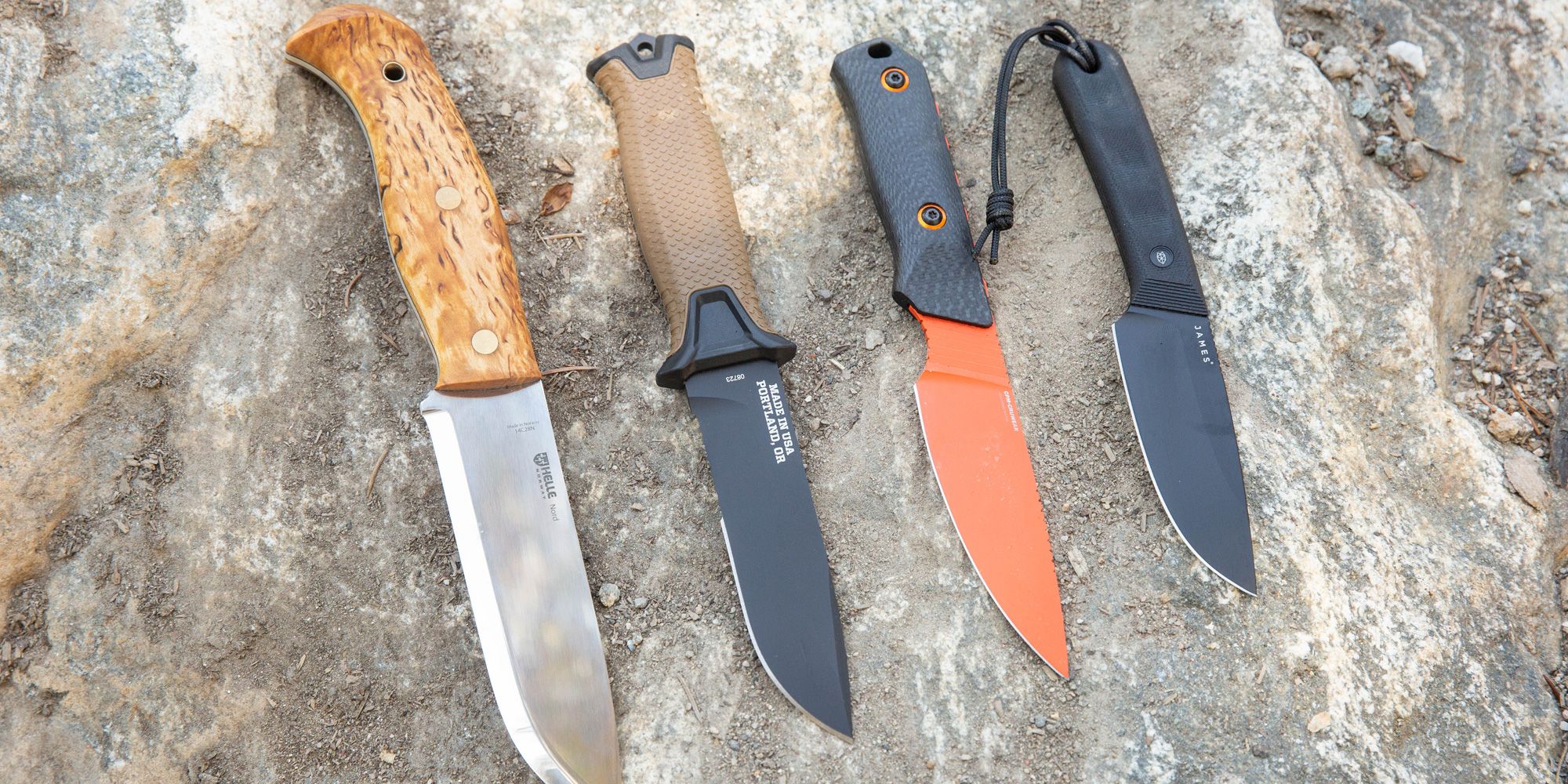
Credit: www.popularmechanics.com
Pros And Cons Of Micarta Handle Material
Micarta handle material for fishing knives has its pros and cons. On the positive side, it offers excellent grip, durability, and resistance to moisture. However, it can be quite heavy and may lack the aesthetic appeal of other handle materials.
Choose wisely based on your preferences and needs.
Offers A Unique Appearance
- Micarta handle material is popular among fishing knife enthusiasts for its distinct and unique appearance.
- It is available in a variety of colors and patterns, allowing you to choose a style that resonates with your personal taste.
- The layered construction of Micarta creates a visually appealing texture, adding a touch of elegance to your fishing knife.
Strong And Lightweight
- Micarta handle material is known for its remarkable strength and durability.
- It is resistant to impact, making it ideal for withstanding the harsh conditions often encountered during fishing trips.
- Despite its strength, Micarta is surprisingly lightweight, offering a comfortable and balanced grip for extended periods of use.
Requires Regular Maintenance
- While Micarta handle material offers numerous benefits, it requires regular maintenance to keep it in top condition.
- It is essential to clean and dry the handle after each fishing expedition to prevent moisture buildup and potential damage.
- Additionally, applying a protective oil or wax helps maintain the appearance and integrity of the Micarta handle, ensuring its longevity.
Micarta handle material for fishing knives offers a unique appearance, combining aesthetics with strength and lightweight properties. However, it does require regular maintenance to preserve its beauty and functionality.
Pros And Cons Of Carbon Fiber Handle Material
Carbon fiber handle material for fishing knives has its pros and cons. On the upside, it is lightweight, durable, and offers excellent grip. However, it can be expensive and may not provide the same level of insulation as other materials.
Ultimately, choosing the right handle material depends on personal preference and specific fishing needs.
Lightweight And Sturdy:
- Carbon fiber handles are known for their lightweight nature, which makes them highly desirable for fishing knives. Their lightweight construction enables anglers to have better control and maneuverability while using the knives.
- In addition to being lightweight, carbon fiber handles are also incredibly sturdy. This strength and durability make them ideal for withstanding the harsh conditions often encountered during fishing trips, such as exposure to water, salt, and rough handling.
Excellent Grip:
- One of the key advantages of carbon fiber handles is their exceptional grip. The textured surface of the carbon fiber provides a secure hold, ensuring that the knife does not slip out of the angler’s hand, even when wet or covered in fish slime.
- The enhanced grip offered by carbon fiber handles allows anglers to make precise cuts and handle slippery fish with ease. It provides a sense of confidence and control, enhancing the overall fishing experience.
Can Be Expensive:
- While carbon fiber handles offer many benefits, they can be more expensive compared to other handle materials. The manufacturing process and high-quality materials used in carbon fiber construction contribute to the higher price tag.
- However, it’s important to consider the long-term value and durability that carbon fiber handles provide. Despite the initial investment, their longevity and performance make them a worthwhile investment for serious anglers.
Requires Special Care:
- Carbon fiber handles require special care to maintain their optimal condition. The delicate nature of the material means that it can be more prone to scratches or damage if mishandled or subjected to rough treatment.
- It is essential to clean and dry carbon fiber handles thoroughly after each use to prevent water or moisture from causing any potential damage. Additionally, using a protective case or sheath when storing the knife can help prevent unnecessary wear and tear on the handle.
Carbon fiber handles for fishing knives offer a combination of lightweight design, excellent grip, and durability. However, they can be more expensive than other handle materials and require special care to ensure their longevity. For anglers who prioritize performance and value, carbon fiber handles are an excellent choice.
Choosing The Right Handle Material For Your Fishing Knife
Choosing the right handle material for fishing knives is crucial for a comfortable and reliable grip. Consider options like wood, rubber, or synthetic materials to enhance your fishing experience.
When it comes to selecting a handle material for your fishing knife, it’s crucial to find one that meets your specific needs and preferences. The handle material plays a vital role in the overall performance and durability of the knife, so making an informed decision is essential.
To help you with this, here are some key factors to consider when choosing the right handle material for your fishing knife:
Determine Your Priorities
Before delving into the different handle materials available, it’s important to determine your priorities and what you value most in a fishing knife handle. Consider the following factors:
- Grip: Look for a handle material that provides a secure grip, even when wet, to prevent accidents and ensure safe handling.
- Comfort: Choose a material that feels comfortable in your hand, as you’ll be using the knife for extended periods.
- Durability: Opt for a handle material that can withstand the harsh conditions often encountered while fishing, such as exposure to saltwater and extreme temperatures.
- Maintenance: Consider the level of maintenance required for the handle material, as some may require more care and cleaning than others.
Consider Your Fishing Conditions
The fishing conditions you typically encounter will greatly influence the ideal handle material for your fishing knife. Different materials offer varying levels of resistance to water, salt, and other environmental factors. Here are some material options and their advantages:
- Stainless steel: Known for its corrosion resistance, stainless steel handles are highly durable and require minimal maintenance. They are particularly suitable for saltwater fishing environments.
- Synthetic materials: Handles made from synthetic materials such as reinforced nylon or fiberglass are lightweight, durable, and resistant to moisture and chemicals. They are an excellent choice for avid anglers who want a low-maintenance option.
- Natural materials: Some anglers prefer the aesthetics and feel of natural handle materials like wood or bone. However, keep in mind that these materials may require more care and maintenance to prevent damage from water exposure.
Try Different Handle Materials
The best way to determine which handle material suits your needs is to try them out firsthand. Visit a local fishing gear store or attend fishing expos where you can handle knives with various handle materials. Pay attention to how they feel in your hand, their weight, and the grip they provide.
Trying different handle materials will give you a better understanding of their pros and cons.
Seek Advice From Experienced Anglers
Finally, there’s no substitute for advice from experienced anglers who have firsthand knowledge of different handle materials. Join fishing communities, forums, or seek advice from friends who are seasoned anglers. Their insights and experiences can help you make an informed decision and guide you towards the best handle material for your fishing knife.
Remember, choosing the right handle material for your fishing knife is essential for performance, safety, and overall satisfaction. By considering your priorities, the fishing conditions you encounter, trying different materials, and seeking advice from experienced anglers, you’ll be well on your way to finding the perfect handle material for your fishing adventures.
Frequently Asked Questions For Choosing The Right Handle Material For Fishing Knives
What Is The Preferred Material For Knife Handles?
The preferred material for knife handles varies, but popular options include wood, G10, Micarta, and stainless steel.
What Is The Best Steel For Fishing Knives?
The best steel for fishing knives is typically high-carbon stainless steel due to its durability and corrosion resistance.
What Is The Best Grip For A Knife Handle?
The best grip for a knife handle depends on personal preference and the task at hand.
What Makes A Knife Handle Comfortable?
A comfortable knife handle is shaped and textured to provide a secure grip, reducing hand fatigue during use.
Conclusion
When it comes to fishing knives, choosing the right handle material is crucial for a successful and enjoyable fishing experience. A quality handle material not only enhances the knife’s performance but also ensures your safety and comfort while using it.
Various handle materials offer different benefits, ranging from durability and grip to resistance against water and corrosion. Whether you prefer the classic elegance of wood, the strength and versatility of synthetic materials like G10 or FRN, or the lightweight nature of carbon fiber, each option has its advantages.
Take into consideration your specific needs, preferences, and the fishing conditions you’ll be facing. By doing so, you can make an informed decision and select the handle material that best meets your requirements. With the right handle material, your fishing knife will become a reliable and long-lasting companion on your angling adventures.

